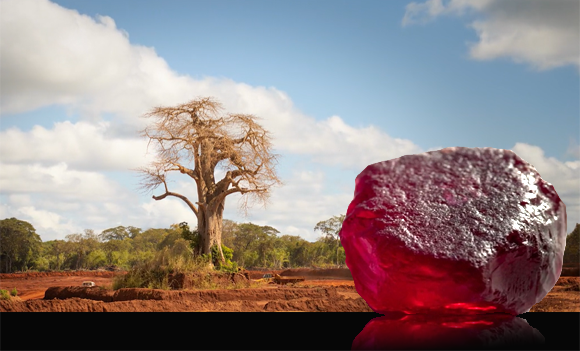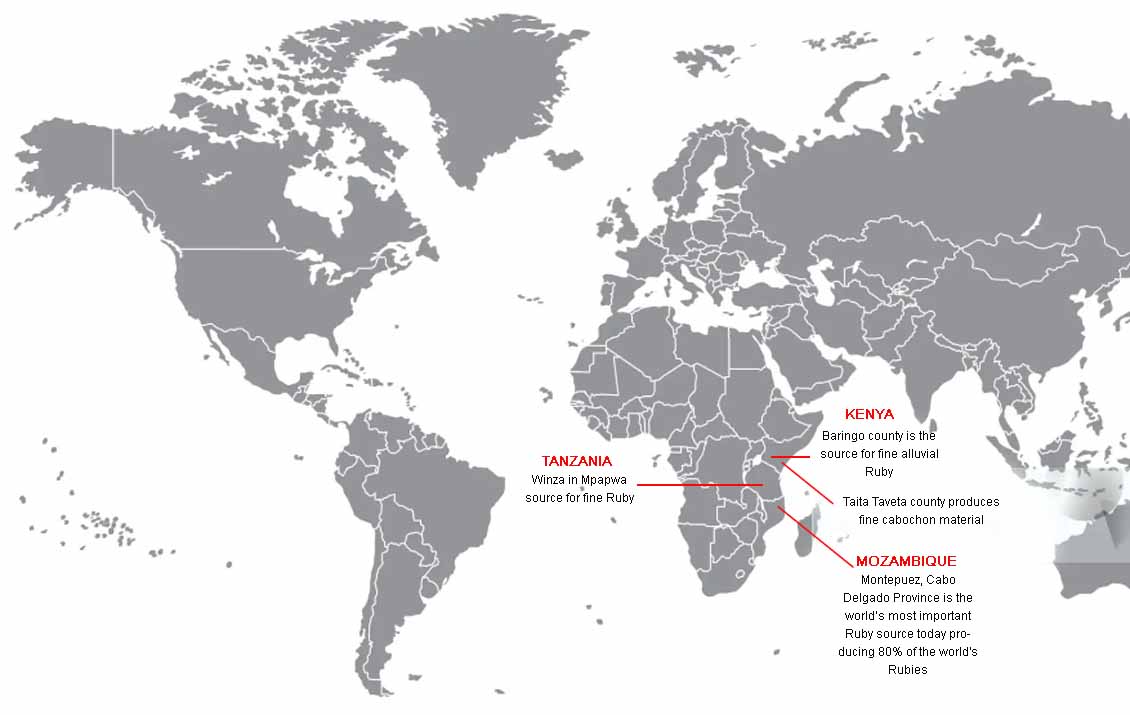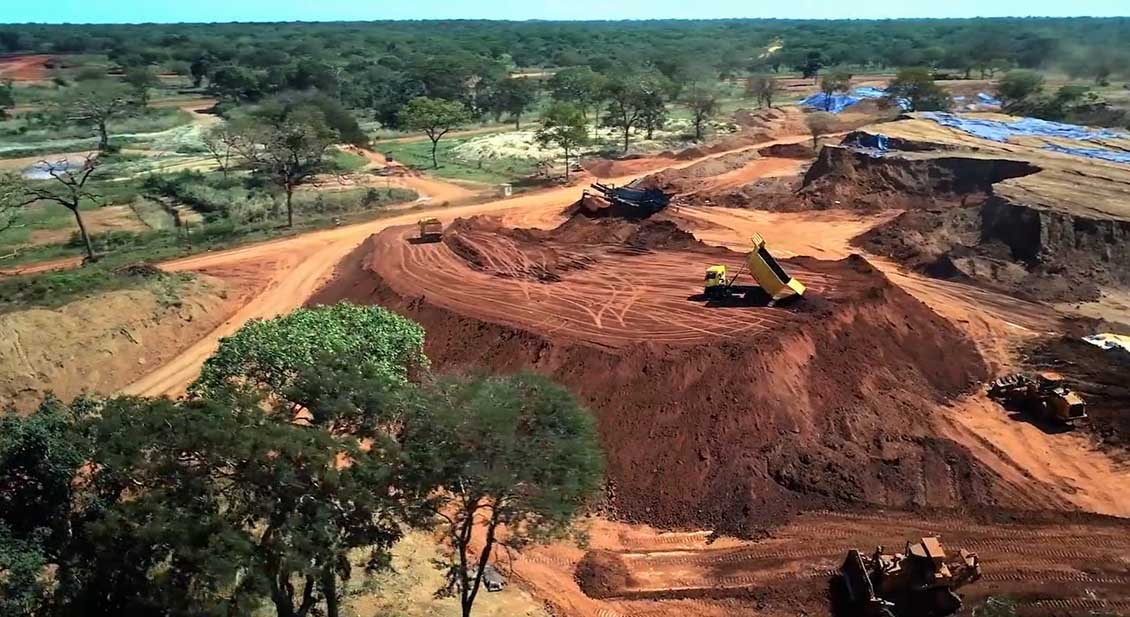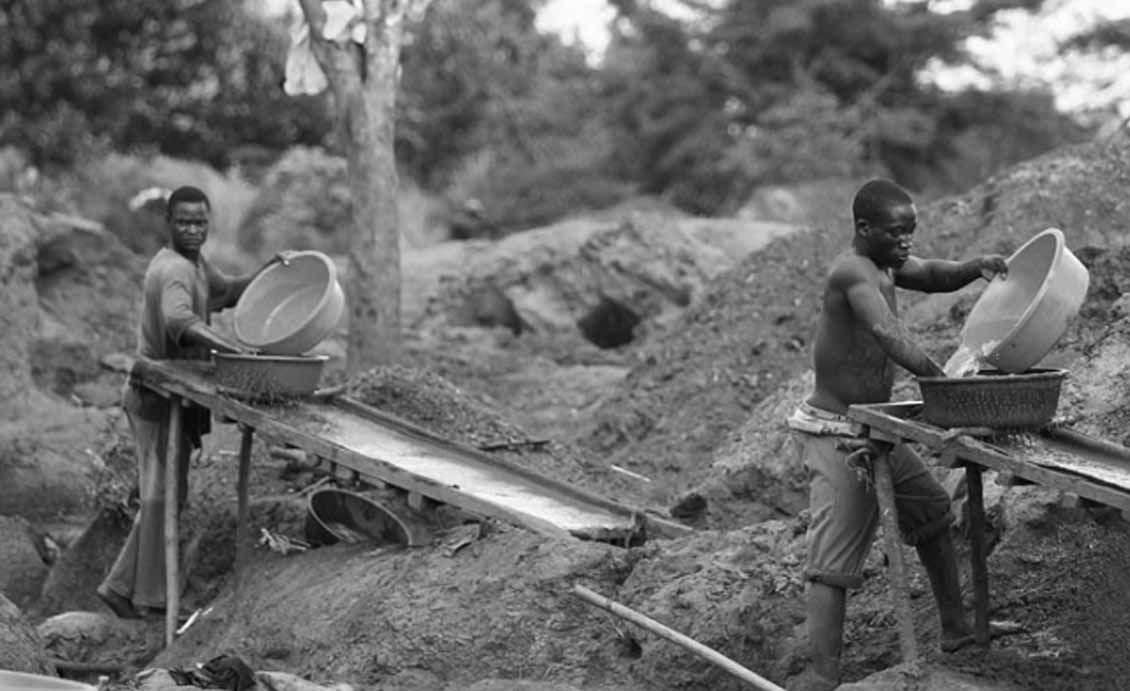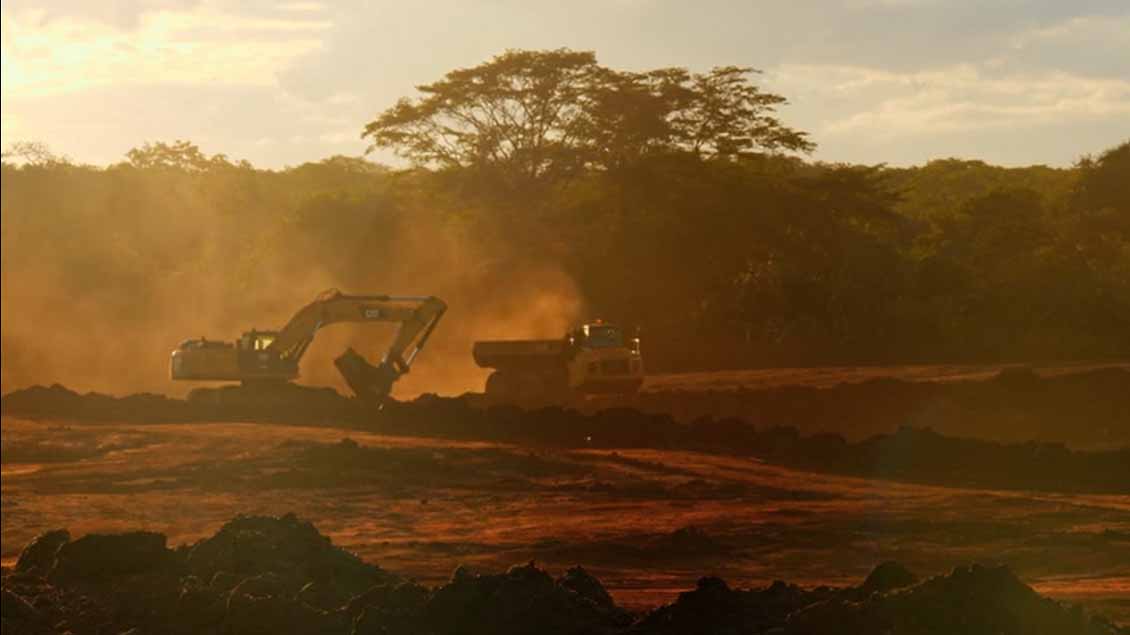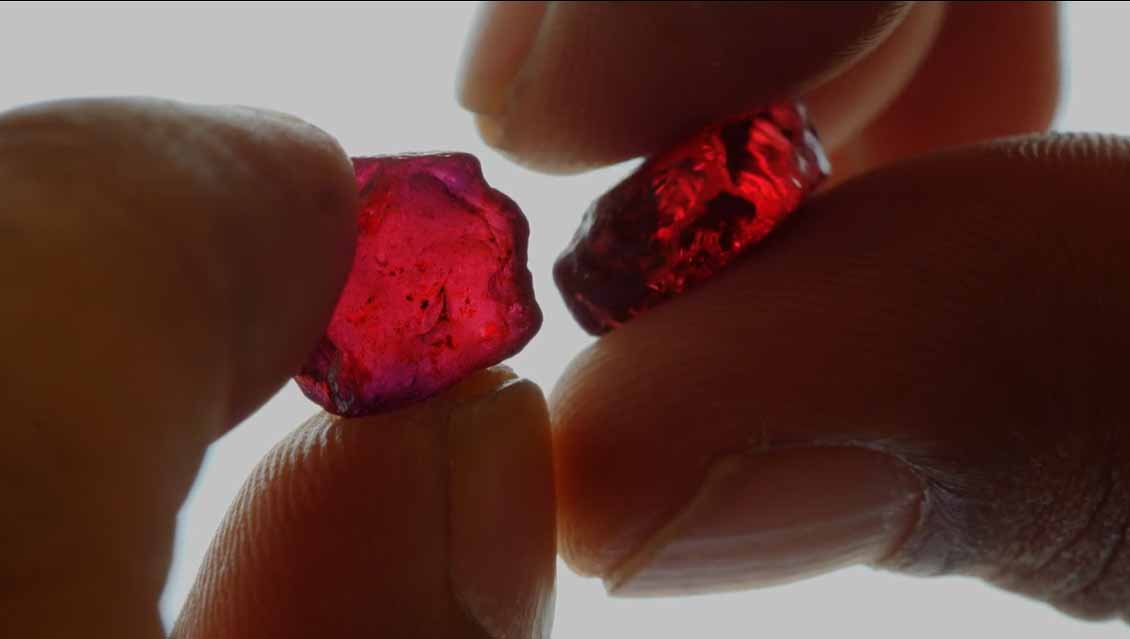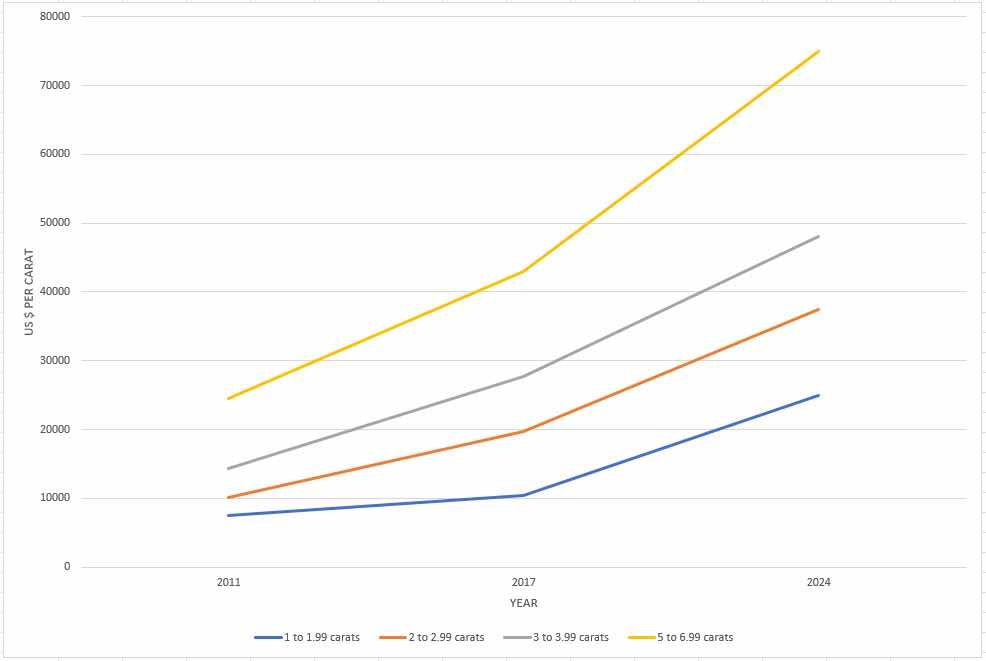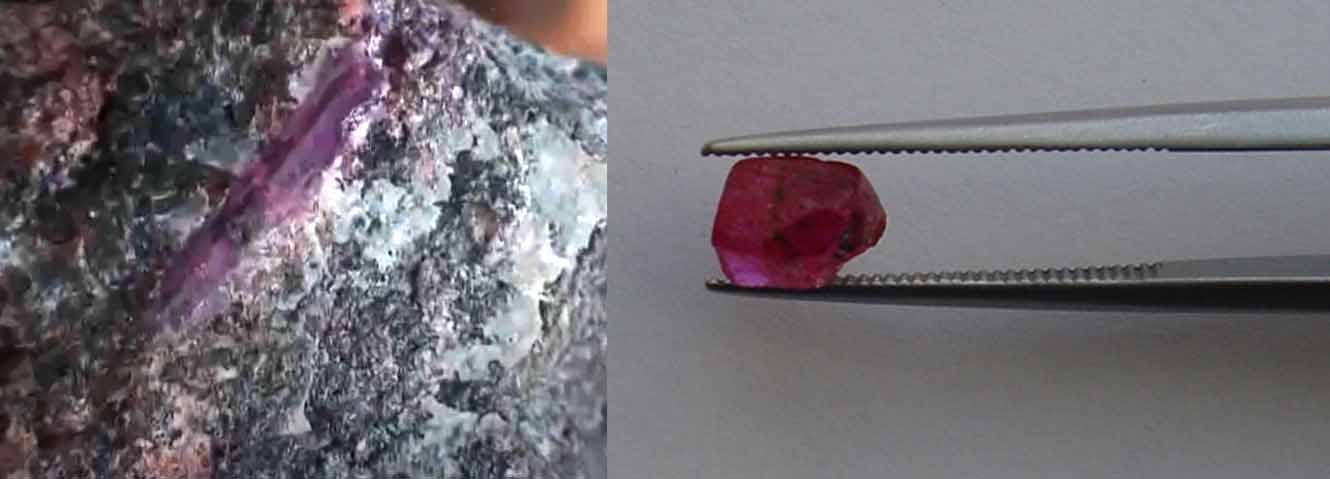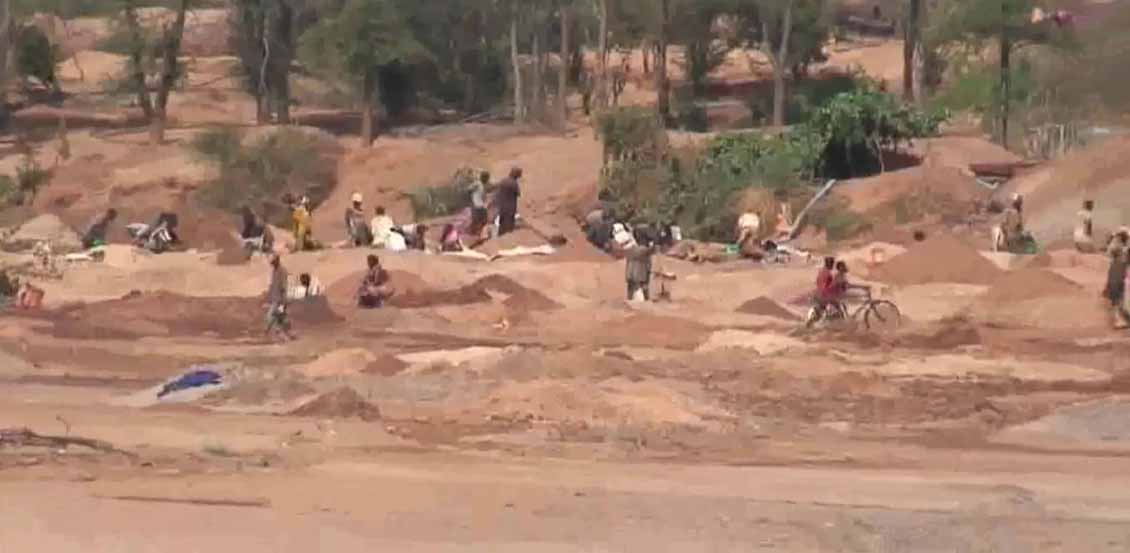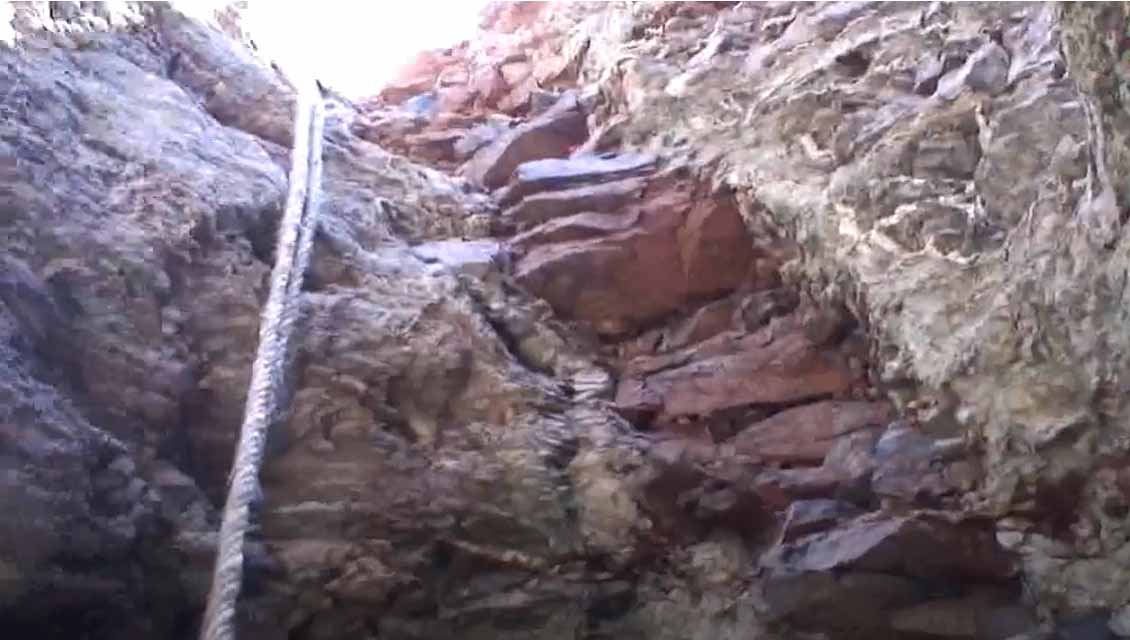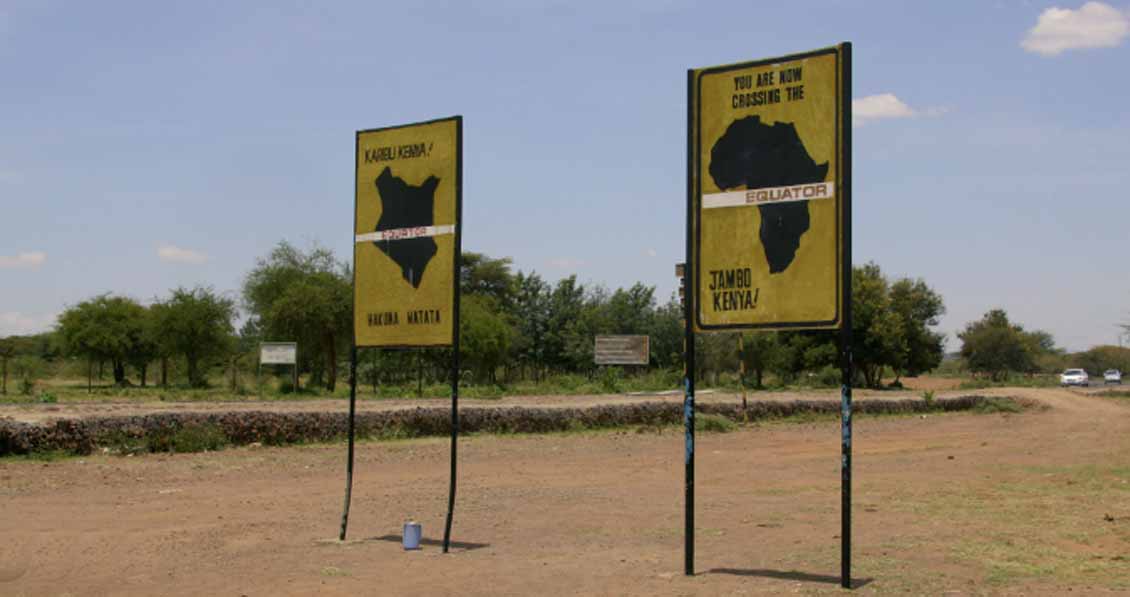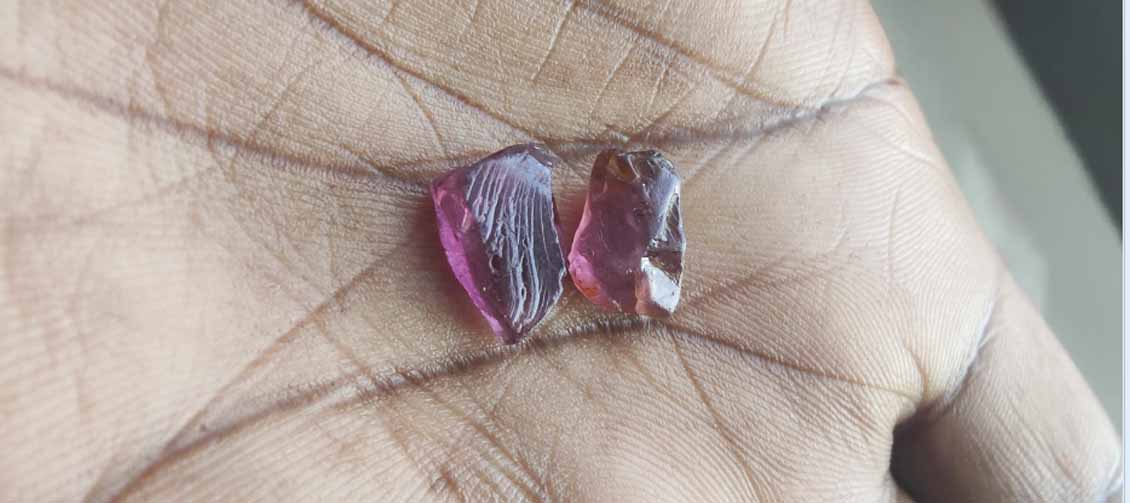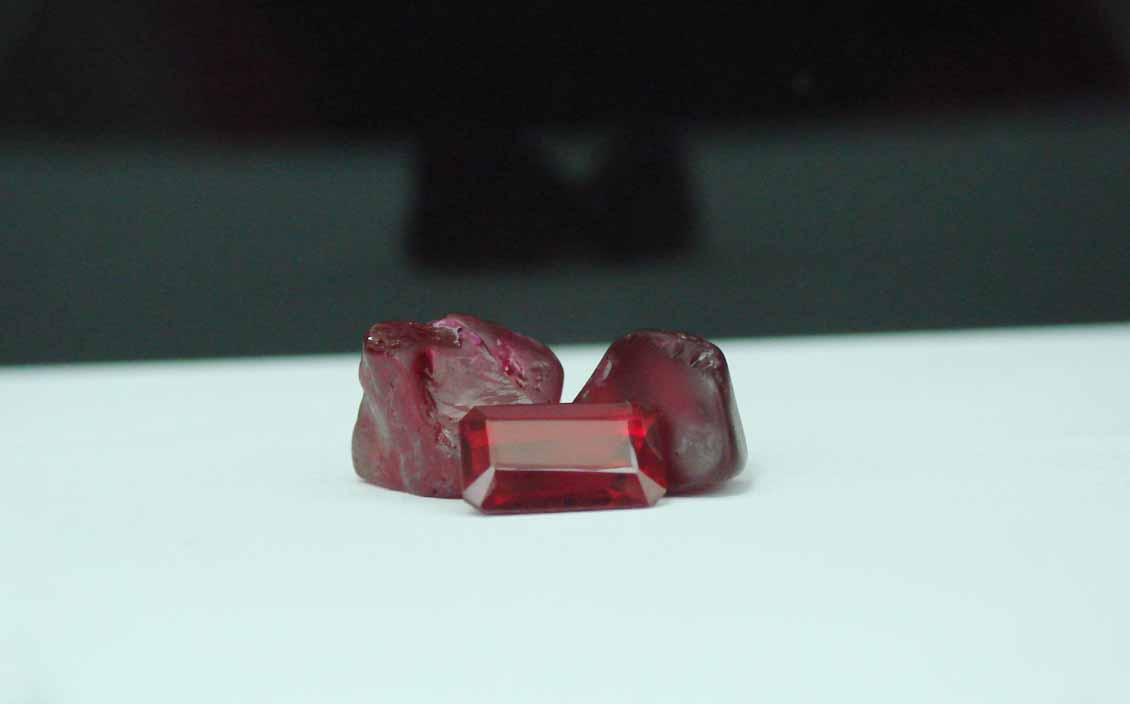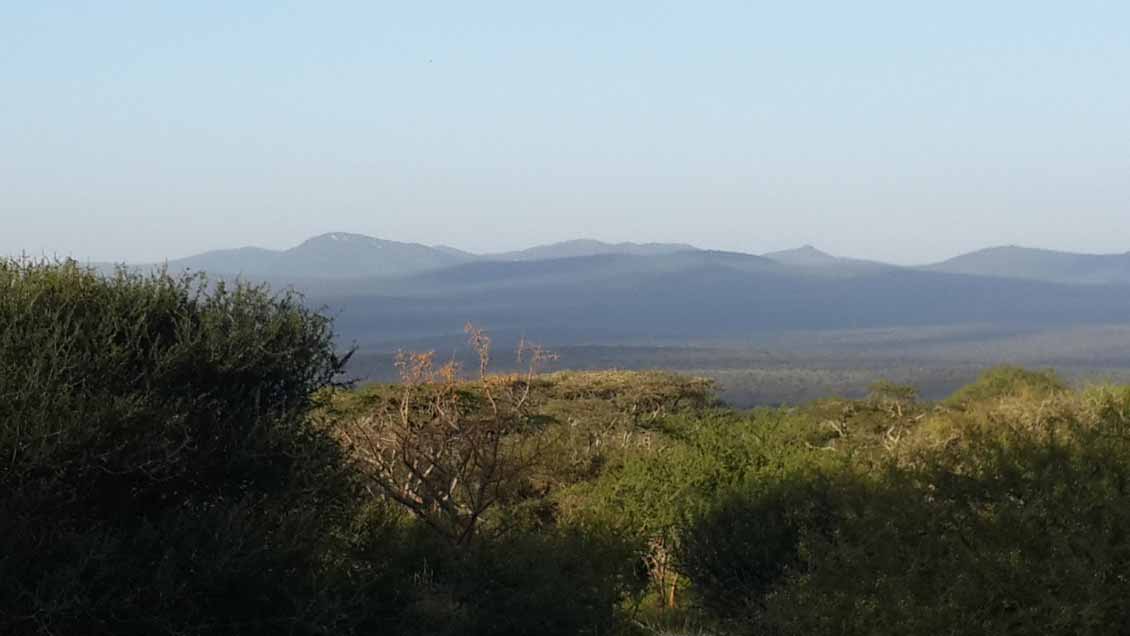UNEARTHING AFRICAN RUBIES
Ruby mining in Africa is a vibrant and dynamic sector within the global gemstone industry. This precious gemstone, revered for its deep red hue and historical significance, has found a prominent place in several African countries, contributing significantly to their economies.
The continent’s rich geological diversity has made it a hotspot for ruby mining, attracting global interest and investment. This article delves into the major ruby mining countries in Africa, and the industry’s future prospects.
THE MAIN SOURCES OF RUBY IN AFRICA
Africa’s ruby deposits are primarily found in Mozambique, Tanzania, and Kenya. Each of these countries boasts unique geological formations that have given rise to high-quality rubies, often rivaling or surpassing those from the traditional sources in Asia.
Mozambique has emerged as one of the world’s leading sources of rubies in recent years, particularly since the discovery of significant deposits in Montepuez in 2009. The Montepuez ruby mine, operated by Gemfields, is considered one of the largest ruby mines globally, producing rubies that are highly prized for their color and clarity. This mine produces over half the world’s supply of Rubies and a high percentage of the very finest ones on the market.
Tanzania, particularly the Winza and Longido regions, has been known for ruby mining for several decades. The country’s rubies often come with a unique violet tinge, adding to their distinctiveness in the global market.
Kenya is known for its diverse gemstone deposits, with ruby mining being concentrated in the regions of Baringo.
THE GLOBAL MARKET FOR AFRICAN RUBIES
African rubies have carved a niche in the global gemstone market, admired for their exceptional quality and unique characteristics. The rise of African rubies, particularly from Mozambique, has shifted the traditional dominance of Burmese rubies, creating a more diversified and competitive market.
Driven by their rarity and the growing appreciation for colored gemstones in fine jewelry, Auction houses, and gemstone markets worldwide have witnessed robust demand for high-quality African rubies, fetching record prices and solidifying their status as a valuable investment.
Let us dive into each country to understand why African Rubies are in such high demand and what makes them a good investment.
THE RUBY RUSH OF MONTEPUEZ, MOZAMBIQUE
A Glimpse into the World’s Largest Ruby Mines
In the heart of Mozambique lies Montepuez, a region that has become synonymous with the vivid red allure of rubies. Since their discovery in 2009, the rubies of Montepuez have transformed the local landscape and economy, catapulting Mozambique into the spotlight as one of the world’s premier sources of these precious gemstones.
The MRM Mine in Montepuez, Mozambique. Source – Gemfields
Northeastern Mozambique is at a unique, geologically critical junction between two treasure-bearing belts of rock, formed between 500 and 800 million years ago. The highlands of northern Mozambique are dominated by a Precambrian basement section of the well-known Mozambique Belt that extends up north to the Mediterranean.
In its basement, large regions were metamorphosed at a high temperature and high pressure during the Pan-African tectonic event, creating suitable conditions for the formation of gemstones. Deposits of the Pan-African Orogeny are much older than the Himalayan range gem deposits (e.g., Myanmar rubies) that are only 40 million years old.
Discovery, Legend and Early Days
The story of Montepuez’s rubies began in 2009 when a local herder stumbled upon a cluster of glittering red stones. This accidental discovery sparked a modern-day treasure hunt, attracting thousands of artisanal miners and international gem companies.
The rush was driven by the exceptional quality and quantity of the rubies, which quickly gained recognition for their rich, pigeon-blood red hue, a characteristic highly prized in the gem market.
The Montepuez Ruby Mining Company (MRM), a subsidiary of the British company Gemfields, was established to capitalize on this newfound wealth. By 2011, MRM had secured a significant concession area spanning 33,600 hectares, making it one of the largest ruby mining operations in the world.
The Mining Parties
Ruby mining in Montepuez involves both artisanal and large-scale industrial operations. Artisanal miners, often working with rudimentary tools, extract rubies from shallow pits. These independent miners, locally known as “garimpeiros,” have played a crucial role in the industry despite facing significant challenges such as lack of formal recognition and unsafe working conditions.
Garimpeiros – artisanal miners washing overburden in their hunt for Rubies in Montepuez
Today, the Montepuez ruby mine in Cabo Delgado province covers 33,600 hectares of one of the most significant ruby deposits in the world.
Gemfields owns 75% of Montepuez Ruby Mining (“MRM”) and they have employed 95% Mozambican nationals. The remaining 25% is owned by Mwiriti Limitada, a local Mozambican company.
The Mining Process
Mining at Montepuez is an open-pit operation, which means no tunnels, and a largely mechanized process to scoop up the gravel and gemstones for sorting Mozambican rubies. The large areas of land are excavated to access ruby-bearing gravel layers.
Mechanized Ruby Mining Process at the MRM Gemfields Mine
The gravel is then processed to separate the rubies from other materials. This large-scale operation has enabled MRM to extract significant quantities of high-quality rubies, solidifying Montepuez’s position in the global market.
Exceptional Ruby rough mined in the MRM mine. Source – Gemfields
By employing advanced mining techniques and machinery, they have ensured higher efficiency and safety standards. This also emphasizes transparency in operations, ensuring that the rubies are conflict-free and mined responsibly. Miners have since implemented a comprehensive corporate social responsibility program, focusing on community engagement, environmental conservation, and fair labor practices. Additionally, all mined areas are rehabilitated, the topsoil replaced and indigenous trees planted.
The Future of Ruby Mining in Montepuez and Ruby Prices
With continued exploration and technological advancements expected to enhance production and sustainability the future of Ruby mining in Montepuez looks promising. New deposits are being discovered, and improved mining techniques are likely to increase efficiency and reduce environmental impact. Moreover, the global market for rubies remains robust, with very fine, untreated material commanding the highest prices in history in recent years.
Graph showing rise in very fine, unenhanced Ruby prices of Mozambique material from 2011 to 2024 Data Source – The GemGuide
Mozambique vs Burma Ruby Prices
Similarly, a comparison of the price difference between Burmese Ruby and Mozambique Ruby reveals quite what a good investment Mozambique Ruby is at present. Top Mozambican material and top Burmese are on a par in terms of quality. Mozambique material still sells at a much lower price point than Burmese.
| Size Range | Burmese Unenhanced Top Grade | Mozambique Unenhanced Top Grade |
| 0.50 – 0.99 cts | $20,000 to $30,000 per carat | $8,000 to $10,00 per carat |
| 1.00 – 1.99 cts | $42,000 to $85,000 per carat | $18,000 to $35,000 per carat |
| 2.00 to 2.99 cts | $100,000 to $225,000 per carat | $37,500 to $65,000 per carat |
| 3.00 to 3.99 cts | $275,000 to $450,000 per carat | $48,000 to $70,000 per carat |
| 4.00 to 4.99 cts | $450,000 to $700,000 per carat | $55,000 to $80,000 per carat |
| | | |
Price Comparioson between Burmese Ruby prices and Mozambique Ruby prices in 2024
RUBY MINING IN WINZA, TANZANIA : A GEMSTONE HAVEN
Tanzania is well-known for being a treasure-trove of gems thanks to the Mozambique orogenic belt (a geological formation that acts as nature’s treasure box). The mines in the country have been worked on and off for many years, but after very fine, large, and untreated rubies appeared from Winza, roughly located in the center of the country in 2008 (multiple rubies were over ten carats), a gem rush began. Winza, a small but significant village in the central part of Tanzania, gained global recognition due to its rich deposits of high-quality rubies.
Unknown Origin Story of the famous Winza Rubies – The story sounds like a fairy tale and actually began in the 1990s. Back then, an old farmer, reportedly found rubies on his farmland outside the village. Villagers today tell that the old man mined the rubies in secret and sold them to an old Somali man, who in turn sold the gems to traders in Dar Es-Salaam on regular trips. Before the Somali deceased not too long ago, he summoned his son, who worked as a watchman in the capital, to his deathbed and passed the secret on to him. When the son, a Mr. Shabani, tried to continue the clandestine business, he was followed, the secret of the ruby mine was revealed and miners started to flock to Winza.
In December 2007 71 guests were registered with the village secretary. In January 2008 the number had risen to 700 and in May already 5 – 6.000 miners flooded Winza to try their luck. At the same time, buyers from Thailand, India and Sri Lanka moved in, who pitched camp in Mpwapwa, a small town about 100kms from Winza, because in Tanzania, foreigners were not allowed into mining areas without a special permit.
The initial excitement surrounding these stones led to a rapid influx of miners, traders, and gemologists to the region. Winza rubies captivated the global gemstone market due to their unique characteristics. The rubies of Winza are noted for their intense red color, clarity, and sizable formations, often compared favorably to those from the famous Mogok region in Myanmar.
Rubies from this area commonly have undesirable blue color-zoning, though top-quality, perfectly red, and very clear rubies are possible from the source. They are also basalt-hosted, meaning they often have features like higher clarity and being a little darker (partly due to lack of fluorescence).The rubies from this region are often untreated, unlike those from other parts of the world that undergo various enhancement processes. This natural beauty, coupled with their vibrant red hue and clarity, makes Winza rubies highly sought after.
Fine Winza Ruby shown in its host rock and after knocking in the Tribal Gem Stone offices in 2008
In the present day, Winza is a shadow of its former self. Very few mines produce any Rubies any more, and it appears as if the deposit is finally mined out. Occasionally, one of the few miners who remain will uncover a Ruby of significance, but mostly, the deposit is moribund.
Mining Methods and Operations
Mining in Winza is predominantly artisanal and small-scale. This method involves manual labor where miners dig by hand using basic tools like shovels, picks, and sieves. The rudimentary nature of these operations is a testament to the determination and resilience of the miners who often work in challenging conditions.
Tanzanian artisanal miners in Winza in 2009
Artisanal mining in Winza is a challenging and back breaking process. It can also be very rewarding, and some artisanal miners have used it as a route out of poverty, illustrating its potential to transform lives and the Tanzanian economy. The process usually begins with exploration where miners identify potential ruby-bearing sites through traditional prospecting methods, then follows Excavation, which involves digging pits and tunnels to access the ruby-rich gravel layers. And finally processing where the excavated material is then washed and sorted. The lighter sediment is washed away, leaving behind heavier rubies and other gemstones.
View up from the entrance to a typical atisanal mine in Winza
Artisanal mining, while beneficial economically, often poses severe environmental risks. Efforts are underway by various organizations and the Tanzanian government to promote more sustainable mining practices. Initiatives include, educating miners on the importance of environmental stewardship, implementing better mining techniques, and ensuring the land is restored post-mining.
RUBY MINING IN KENYA – BARINGO & TAITA DISTRICTS
Kenya, a country renowned for its rich landscapes and vibrant wildlife, is also becoming increasingly famous for its treasure trove of gemstones, including Rubies.
The history of ruby mining in Kenya dates back to the early 1970s when rubies were first discovered in the southeastern part of the country. The deposits are primarily located in the Taita Taveta County, in the Tsavo region, which is geologically part of the Mozambique Belt. This belt is known for its high-grade metamorphic rocks that have the ideal conditions for gemstone formation. The ruby deposits in Kenya are generally found in granulite facies rocks and amphibolite facies rocks, making them unique in their geological context. Then, in the early 2000’s an alluvial source of Ruby was discovered in Baringo county.
Ruby Mined in Baringo
Baringo is situated in the Rift Valley region of Kenya and is traditionally known for its scenic landscapes. It is a very volcanic, dry, remote part of the country sweltering under a merciless sun – in fact, the equator runs straight though the middle of the county.
Baringo is now gaining recognition for its hidden treasure beneath the surface—rubies. Baringo’s geological composition is conducive to the formation of high-quality rubies. The region’s metamorphic rocks, formed under high pressure and temperature conditions, create an ideal environment for the development of these precious gems. The rubies found in Baringo are often embedded in marble and associated with minerals like spinel, which further enhances their appeal due to the unique colors and patterns.
Rubies discovered in Baringo are alluvial, meaning that their primary source was elsewhere and the crystals were eroded from their host rock and swept down by ancient rivers to where they are found today. As a result, the crystals have a “water worn” appearance as the sharp edges have been worn off by the action of the river.
Rough Ruby crystals from the Baringo alluvial deposit in RGC offices in 2022. Note the strong pink modifier and “water worn” pebble appearance revealing the alluvial nature of the deposit
A large percentage of Baringo rubies have a strong purple / pink modifier as seen in the photograph above. In fact, some of the material would more accurately be classed as Pink Sapphire rather than Ruby having passed the borderline between the 2 varieties. However, some of the material does have a wonderful, more intense red which is highly coveted. The suite of rough and cut Rubies in the photo below, taken in our offices, showcases this.
A suite of rough and cut Ruby from Baringo. Note the “water worn” pebble appearance of the rough pieces, revealing the alluvial nature of the deposit. Photography – The Tribal Gem Stone
Ruby Mined in Taita
Taita is a beautiful area of Kenya abounding with elephant and other wildlife and overlooked by the magnificent Taita Hills. It is amongst this that one of Kenya’s most important Ruby deposits lies.
The magnificent Taita Hills in Taita Taveta County Photography – The Tribal Gem Stone
Taita’s rubies form in a marble host rock. The appearance and inclusions observed in rubies from Kenya can be similar to other marble-hosted rubies like from Myanmar (formerly Burma) and the Luc Yen area of Vietnam. They can be distinguished with lab-grade equipment to detect trace elements in the chemical composition of these rubies. Much of the material is non-gem qality and classed as “mica Ruby” as it contains a high percentage of mica. It does however, often have a very high color saturation and excellent color quality. The finer crystals can be of excellent color and clarity but mostly, as clarity tends to be lower, Taita rubies are cut as Cabochons.
